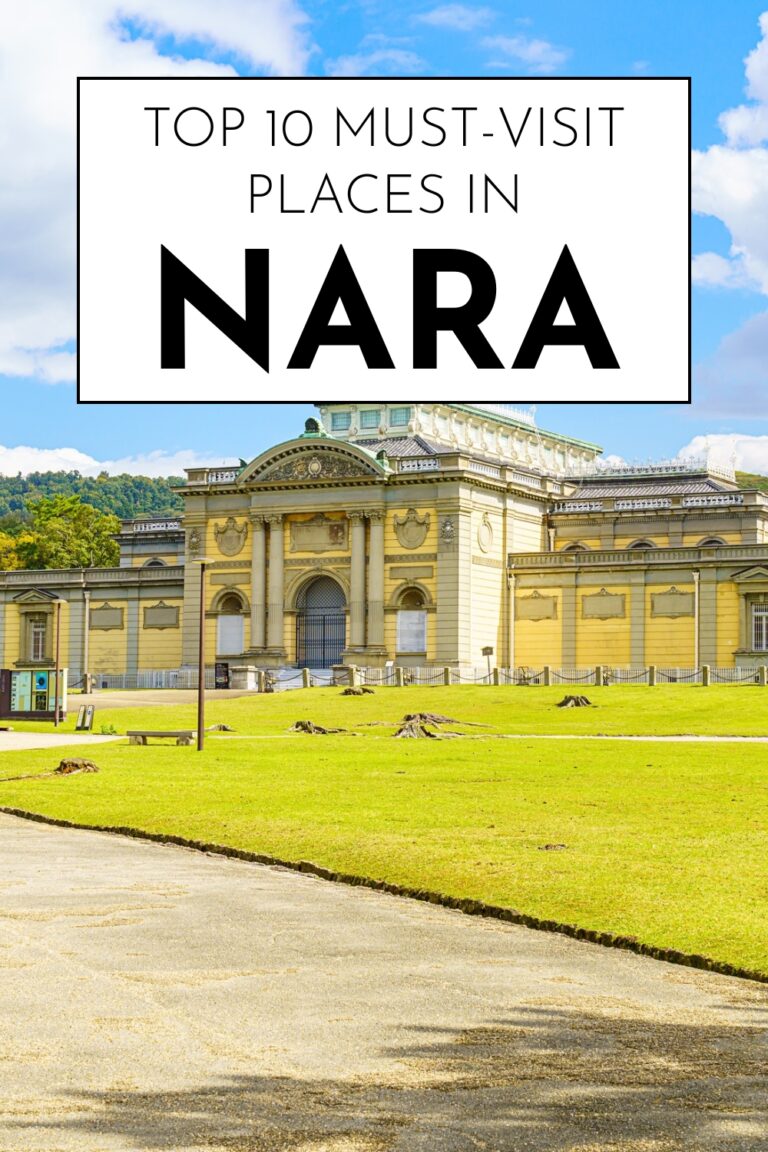Nara, Japan’s first permanent capital, offers visitors a remarkable journey through over 1,300 years of Japanese history and culture. This ancient city, located just 45 minutes from Kyoto and Osaka, perfectly blends sacred temples, friendly deer, peaceful gardens, and traditional architecture into an unforgettable experience.
Known as the birthplace of Japanese Buddhism, Nara served as the country’s capital from 710 to 794 CE. Today, it stands as a UNESCO World Heritage site, home to some of Japan’s most important temples, shrines, and cultural treasures. The city’s compact size makes it perfect for day trips, though its rich offerings reward longer stays.
From massive bronze Buddha statues to over 1,000 sacred deer roaming freely through the city, Nara presents a unique side of Japan where ancient traditions continue to thrive in modern times. The city’s peaceful atmosphere and spiritual significance create a perfect escape from the bustling urban centers nearby.
Let’s explore the ten essential destinations that make Nara a must-visit stop on any Japanese adventure.
1. Todai-ji Temple – Home of the Great Buddha
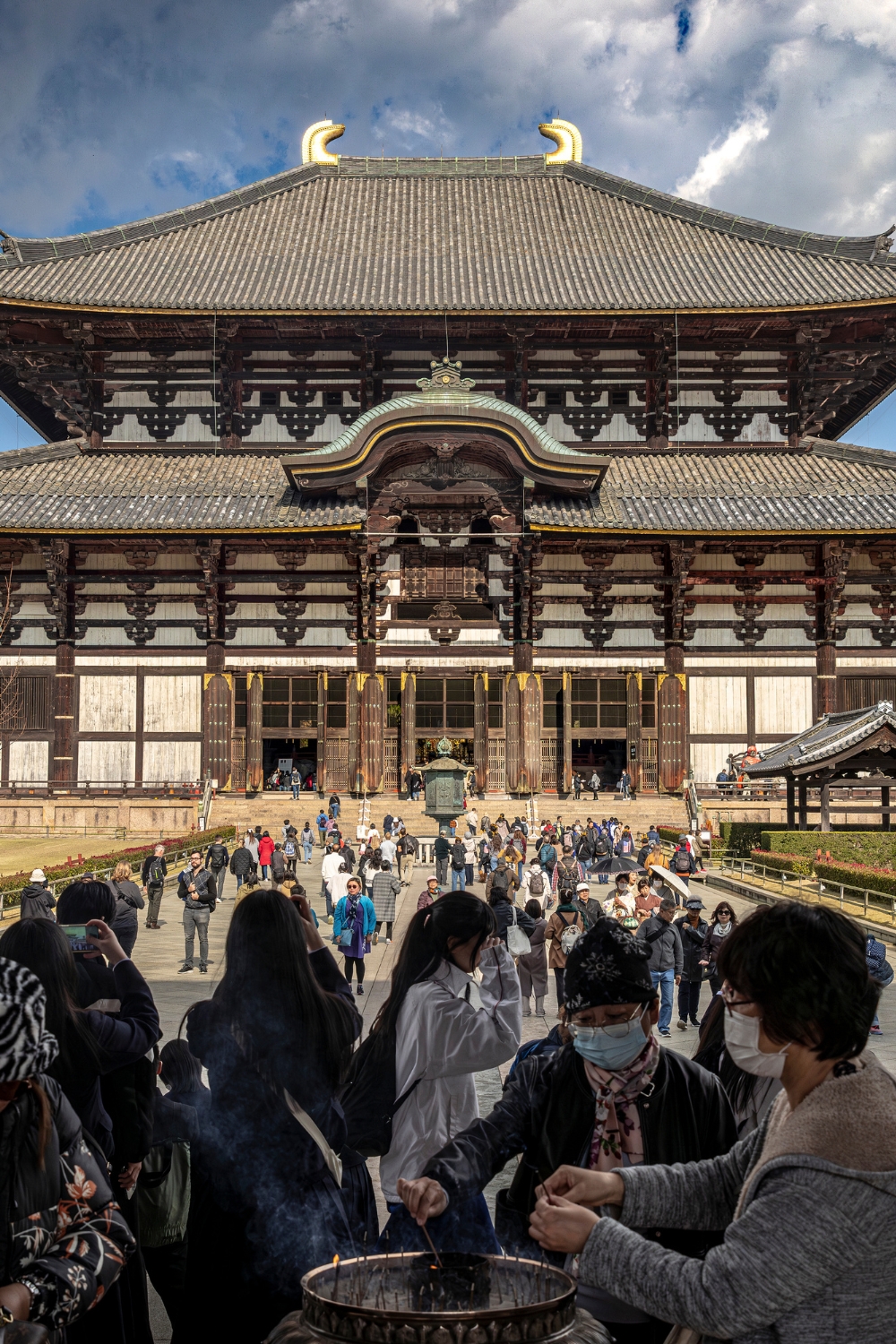
Todai-ji Temple stands as one of Japan’s most magnificent Buddhist temples, housing the largest bronze Buddha statue in the country. This UNESCO World Heritage site represents the pinnacle of Japanese Buddhist architecture and spiritual significance.
The Great Buddha and Daibutsuden Hall
The temple’s main attraction is the Daibutsu (Great Buddha), a massive bronze statue standing 15 meters tall and weighing approximately 500 tons. Cast in 752 CE, this incredible sculpture represents Vairocana Buddha and took over three years to complete.
The Great Buddha sits within the Daibutsuden (Great Buddha Hall), one of the world’s largest wooden buildings. Though the current structure dates to 1709, it’s actually 30% smaller than the original 8th-century building, making the original size almost impossible to imagine.
Historical Significance and Temple Grounds
Emperor Shomu ordered Todai-ji’s construction in 728 CE as the head temple of all provincial Buddhist temples in Japan. The temple complex originally included over 100 buildings, though only a fraction remains today.
The temple grounds feature beautiful gardens, smaller halls, and the famous Nandaimon Gate guarded by impressive Nio guardian statues. Walking through the complex provides insight into the power and influence of Buddhism in ancient Japan.
Key highlights: 15-meter bronze Buddha, Daibutsuden Hall, Nandaimon Gate Best time to visit: Early morning (8-9 AM) to avoid crowds Entry fee: 600 yen for adults Historical period: Founded 728 CE, current hall built 1709
2. Nara Park – Deer Paradise and Cultural Hub
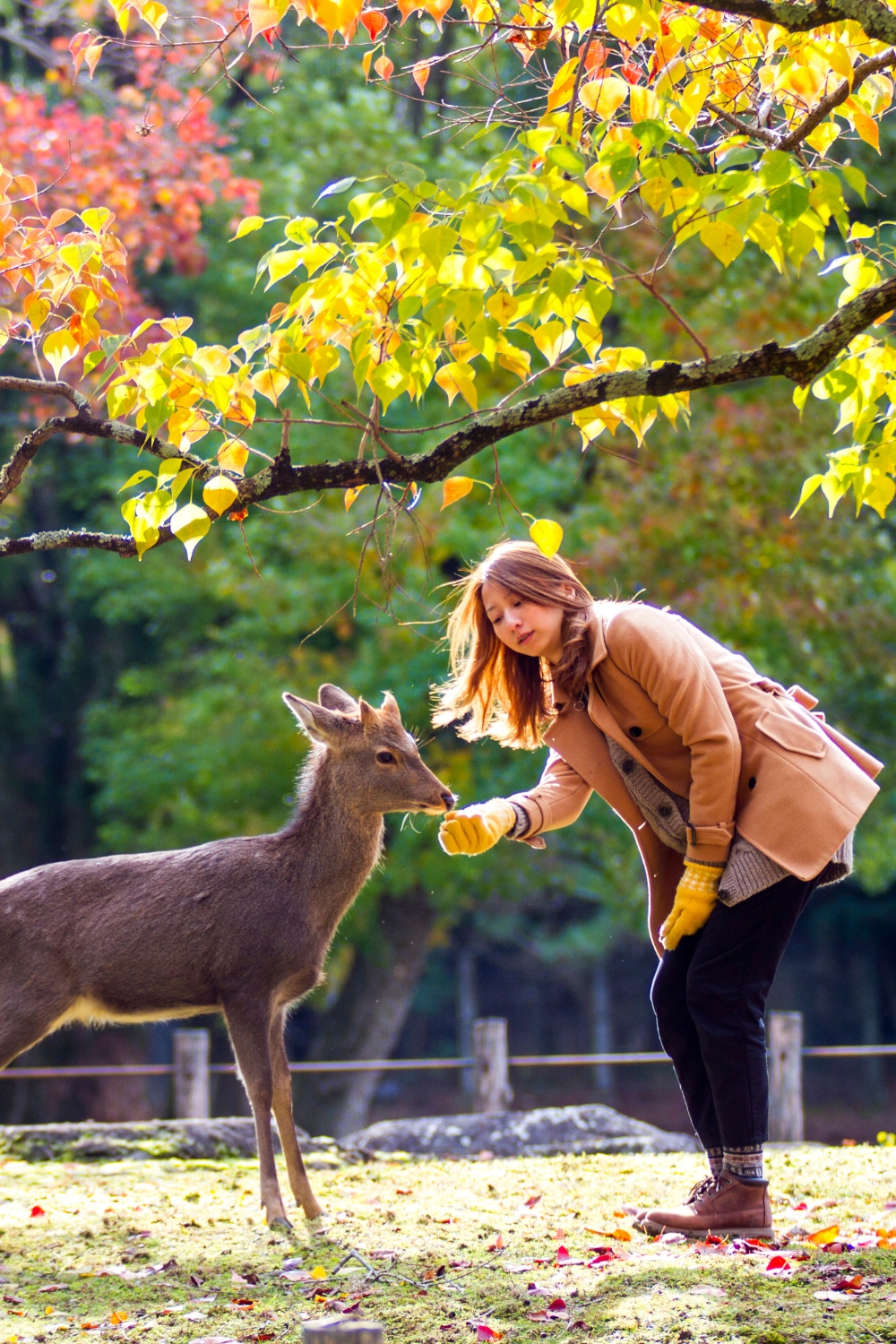
Nara Park encompasses over 660 hectares of parkland in the heart of the city, serving as home to over 1,000 sacred deer and several of Nara’s most important temples and shrines. This unique urban park creates magical interactions between visitors, wildlife, and ancient architecture.
The Sacred Deer of Nara
The park’s famous deer are considered sacred messengers of the Shinto gods, particularly Takemikazuchi-no-mikoto, who according to legend arrived in Nara riding a white deer. These deer roam freely throughout the park and surrounding areas, creating unforgettable encounters for visitors.
The deer have learned to bow to visitors in exchange for shika senbei (deer crackers), creating charming interactions that delight people of all ages. While generally gentle, the deer can be assertive when they spot food, adding excitement to feeding experiences.
Park Attractions and Activities
Beyond deer interactions, Nara Park connects several major attractions including Todai-ji Temple, Kasuga Taisha Shrine, and Kofuku-ji Temple. The park’s walking paths, ponds, and open spaces provide perfect settings for hanami (cherry blossom viewing) in spring and autumn leaf viewing.
The park also features the Nara National Museum, traditional tea houses, and numerous smaller shrines and monuments. Early morning visits offer the most peaceful experiences with fewer crowds and more active deer.
Deer population: Over 1,000 sacred deer Park size: 660 hectares Main attractions: Todai-ji, Kasuga Taisha, Kofuku-ji Best deer feeding time: Early morning or late afternoon
3. Kasuga Taisha Shrine – Thousand Lantern Wonder
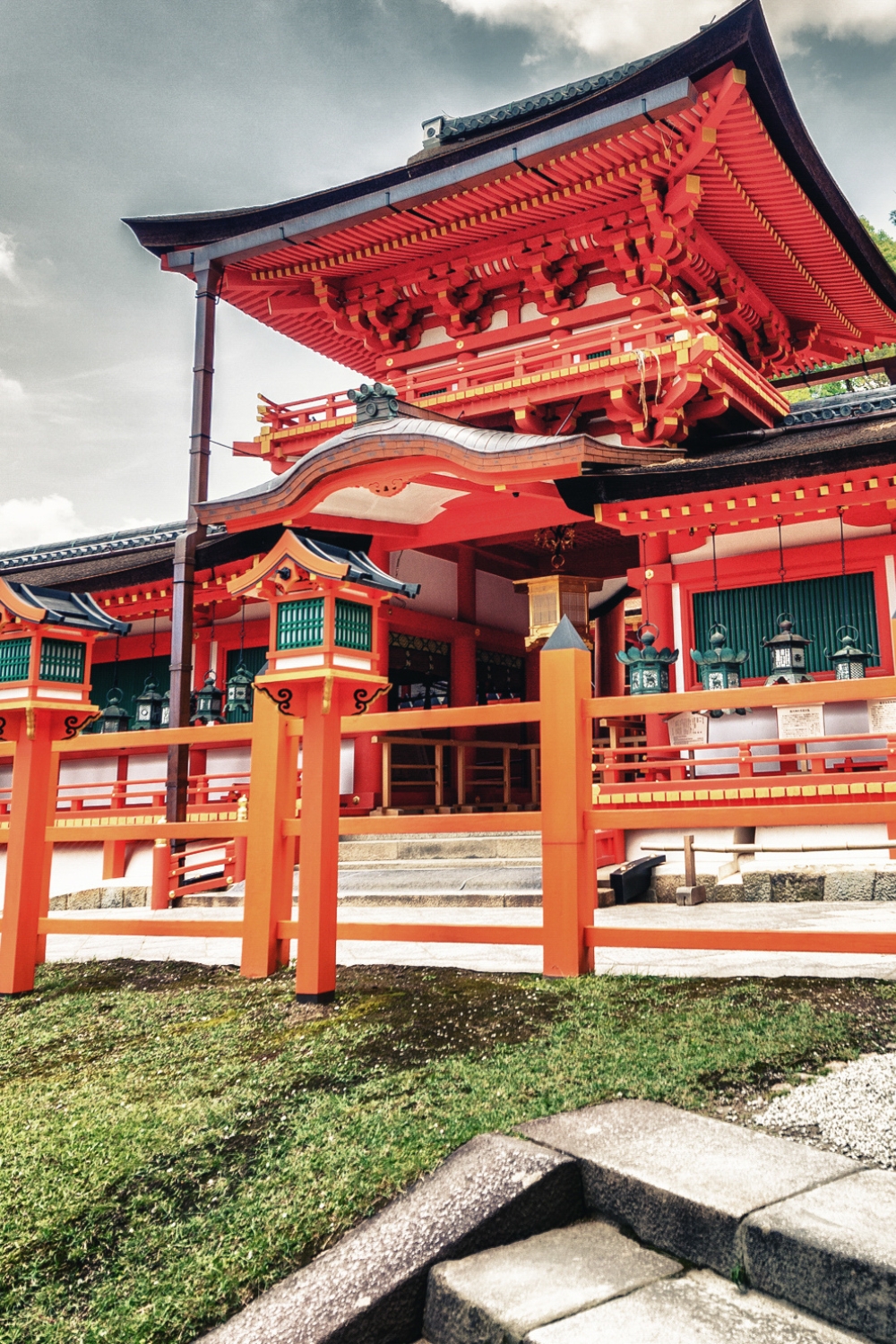
Kasuga Taisha stands as one of Japan’s most visually stunning Shinto shrines, famous for its thousands of stone and bronze lanterns that create magical corridors of light. This UNESCO World Heritage site has served as the Fujiwara family’s tutelary shrine since 768 CE.
The Lantern Pathways
The shrine features over 3,000 lanterns donated by worshippers over the centuries. Stone lanterns line the forest pathways leading to the shrine, while bronze lanterns hang from the buildings themselves. During special festivals, all lanterns are lit simultaneously, creating breathtaking illumination.
The Mantoro (Lantern Festival) occurs twice yearly in February and August, when all lanterns are lit for several evenings. Even during regular visits, some lanterns remain lit, creating atmospheric lighting throughout the shrine complex.
Sacred Architecture and Forest Setting
The shrine’s vermillion buildings stand beautifully against the green forest backdrop of Mount Kasuga. The main buildings showcase classic Shinto architecture with curved roofs, wooden construction, and intricate decorative elements.
The approach to the shrine winds through ancient forest paths where deer often rest in the shade. The combination of natural beauty, architectural elegance, and spiritual atmosphere creates one of Japan’s most photogenic religious sites.
Lantern count: Over 3,000 stone and bronze lanterns Founded: 768 CE Lantern festivals: February and August Unique feature: Lantern-lined forest approach
4. Kofuku-ji Temple – Five-Story Pagoda Icon
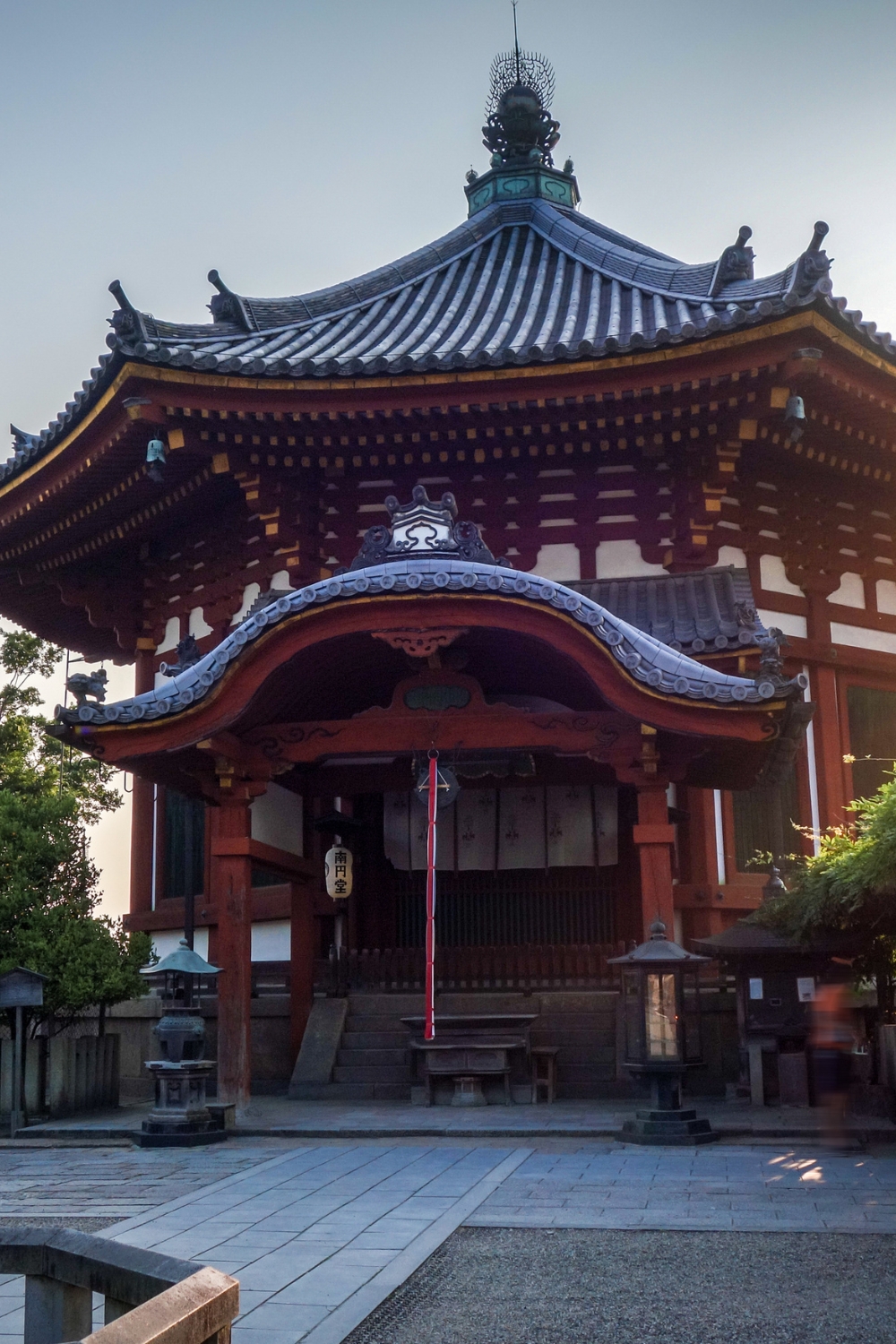
Kofuku-ji Temple complex features Nara’s most recognizable landmark: a five-story pagoda that has symbolized the city for over 1,000 years. This temple served as the Fujiwara family’s tutelary temple and once ranked among Japan’s most powerful religious institutions.
The Iconic Five-Story Pagoda
Standing 50 meters tall, the five-story pagoda represents one of Japan’s tallest wooden pagodas. The current structure dates to 1426, making it the sixth reconstruction of the original 730 CE pagoda. Its graceful proportions and classic design make it one of Japan’s most photographed buildings.
The pagoda’s reflection in nearby Sarusawa Pond creates particularly beautiful views, especially during cherry blossom season and autumn. Evening illumination highlights the pagoda’s architectural details and creates stunning photography opportunities.
Temple Complex and Cultural Treasures
The temple complex includes several important halls housing numerous national treasures and cultural properties. The Tokondo (Eastern Golden Hall) contains beautiful Buddhist statues, while the Central Golden Hall underwent recent reconstruction to restore the temple’s original layout.
The temple museum displays an impressive collection of Buddhist art, including sculptures, paintings, and ceremonial objects that showcase the artistic achievements of ancient Japan. The collection provides insight into the temple’s historical importance and artistic patronage.
Pagoda height: 50 meters (five stories) Current structure: Built 1426 (sixth reconstruction) Best photo spot: Sarusawa Pond reflection Museum highlights: National treasures and Buddhist art
5. Horyu-ji Temple – World’s Oldest Wooden Buildings
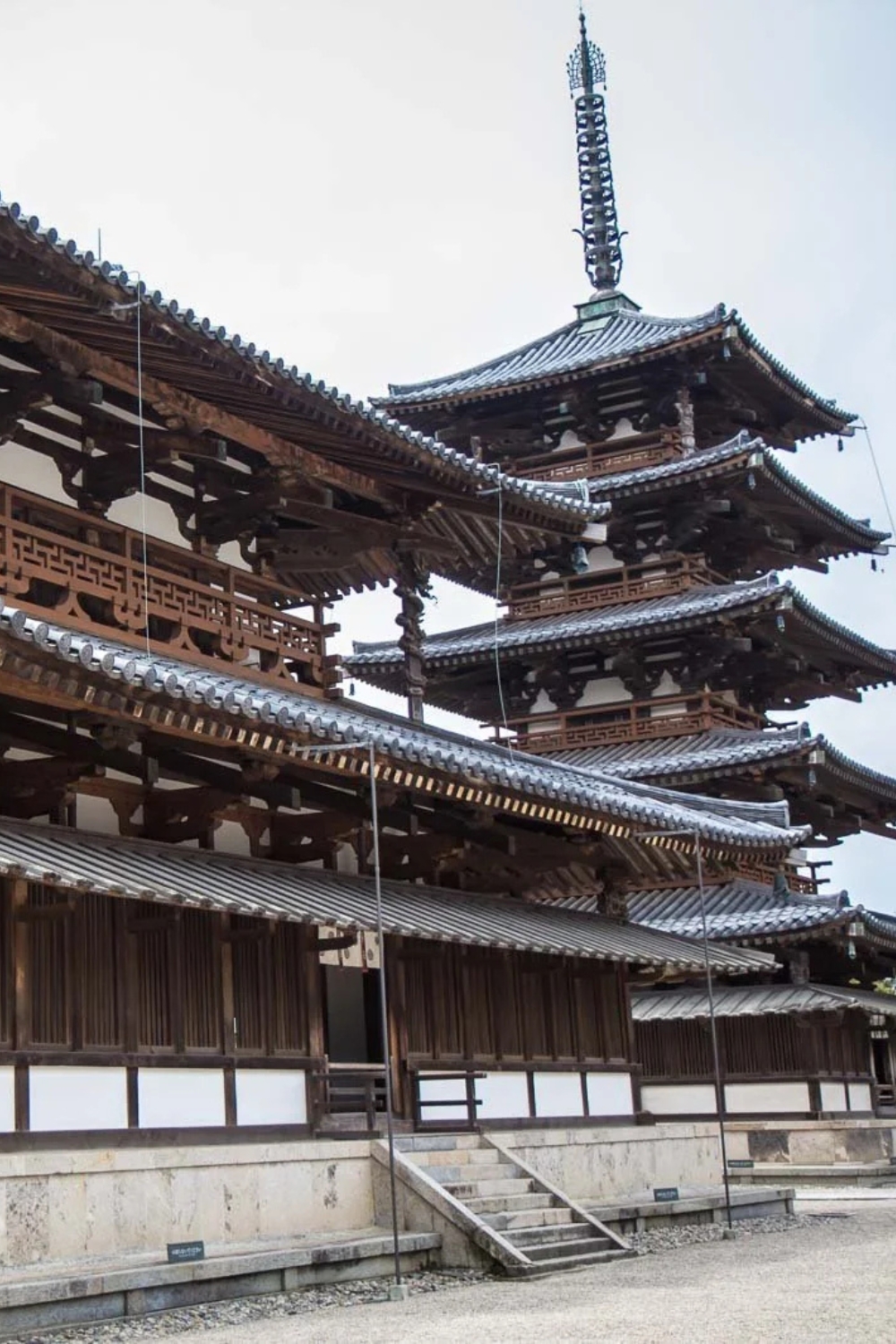
Located 30 minutes from central Nara, Horyu-ji Temple houses the world’s oldest surviving wooden buildings, dating back over 1,400 years. This UNESCO World Heritage site represents the earliest Buddhist temple complex in Japan and showcases remarkable architectural preservation.
Ancient Architecture and Historical Significance
The temple’s main buildings, including the five-story pagoda and main hall, date to approximately 607 CE, making them the oldest wooden structures on Earth. Prince Shotoku founded the temple to promote Buddhism in Japan, establishing it as a center of learning and culture.
The temple complex demonstrates ancient Japanese carpentry techniques using no nails, only intricate wooden joinery that has survived earthquakes, fires, and centuries of weather. The construction methods and architectural styles show Chinese and Korean influences adapted to Japanese conditions.
Cultural Treasures and Buddhist Art
Horyu-ji houses over 2,300 important cultural properties, including some of Japan’s finest Buddhist sculptures, paintings, and ceremonial objects. The temple’s collection spans from the 7th century to the present, showing the evolution of Japanese Buddhist art.
The Yumedono (Hall of Dreams) contains the secret Guze Kannon statue, shown publicly only during special periods. The temple’s treasures provide unparalleled insight into early Japanese Buddhism and artistic development.
Age: Over 1,400 years (world’s oldest wooden buildings) Founded: 607 CE by Prince Shotoku Cultural properties: Over 2,300 important items Distance from Nara: 30 minutes by train
6. Naramachi Historic District – Traditional Merchant Quarter
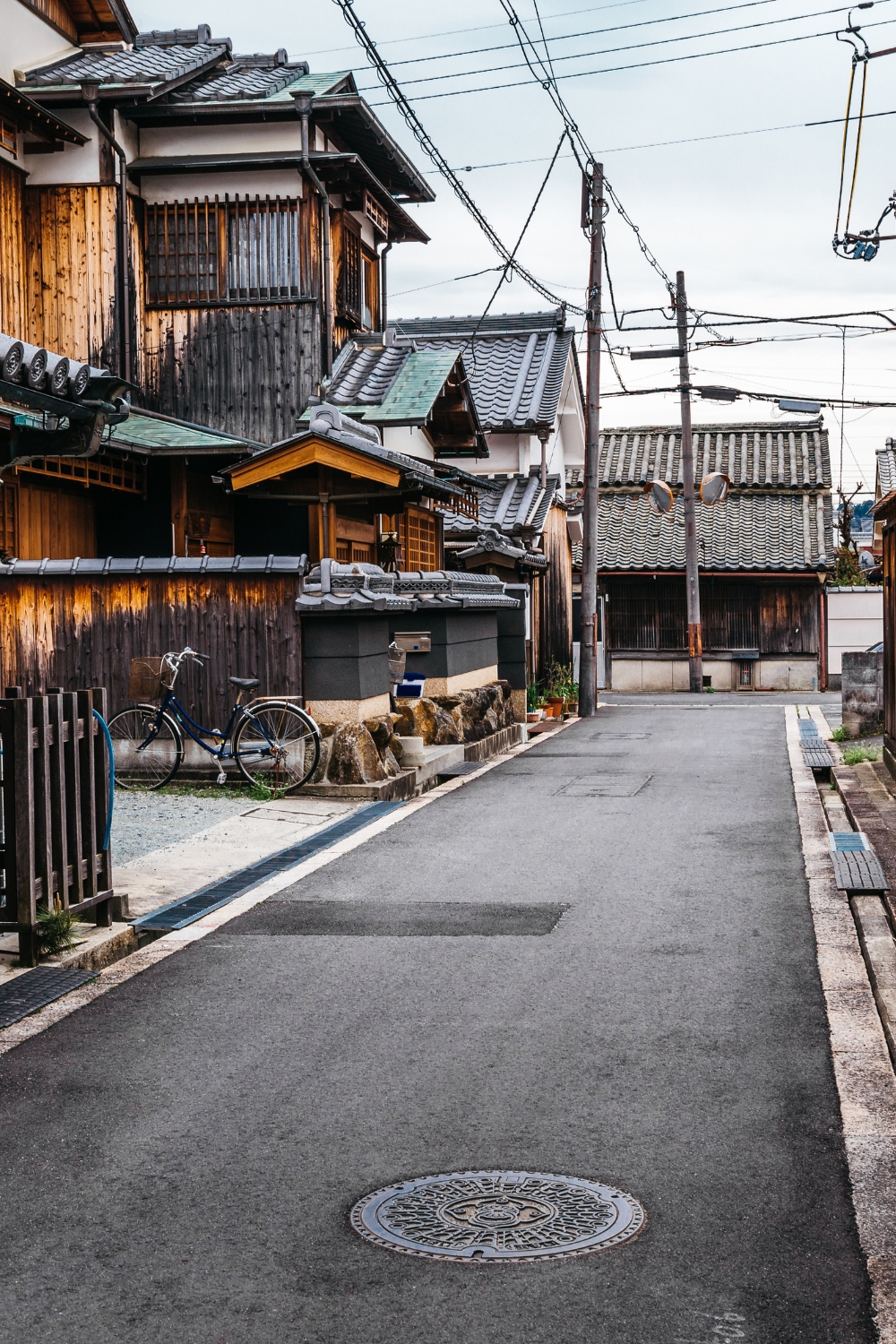
Naramachi preserves the atmosphere of historical Nara through its narrow streets, traditional wooden houses, and local craft shops. This former merchant district showcases how ordinary people lived and worked in historical Japan.
Traditional Architecture and Machiya Houses
The district features numerous machiya (traditional wooden townhouses) that once served as both homes and shops for merchants and craftspeople. These narrow, deep buildings demonstrate efficient use of limited urban space while maintaining traditional architectural elements.
Many machiya have been converted into museums, restaurants, cafes, and shops selling traditional crafts. The Naramachi Museum occupies a restored merchant house, showing traditional furnishings and daily life objects from the Edo period.
Local Crafts and Cultural Experiences
Naramachi offers opportunities to observe traditional crafts like pottery, textile dyeing, and woodworking. Several shops sell locally made items including textiles, ceramics, and traditional sweets that make perfect souvenirs.
The district’s tea houses serve traditional Japanese sweets and matcha tea in historical settings. Walking through the quiet streets provides a peaceful contrast to the busy temple areas while offering authentic glimpses of traditional Japanese life.
Architectural style: Traditional machiya townhouses Best activities: Traditional craft shopping, tea houses Historical period: Edo period (1603-1868) Atmosphere: Quiet, authentic, traditional
7. Nara National Museum – Cultural Heritage Center
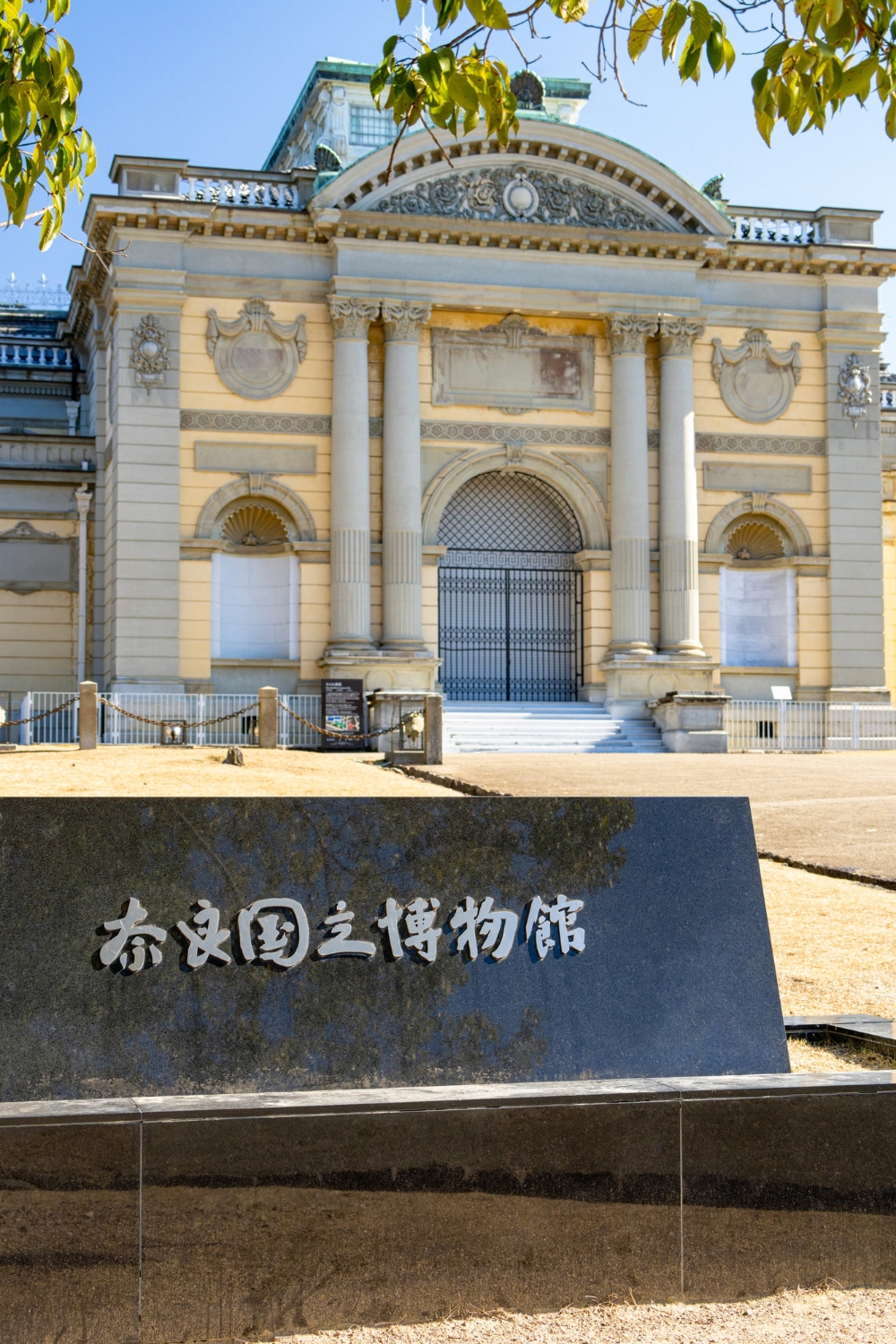
The Nara National Museum specializes in Buddhist art and houses one of Japan’s finest collections of religious sculptures, paintings, and ceremonial objects. The museum provides essential context for understanding the Buddhist temples and cultural sites throughout Nara.
Buddhist Art Collections
The museum’s collection includes masterpieces from Nara’s golden age of Buddhist art, featuring sculptures, paintings, and decorative objects from the 7th century onward. The collection showcases the artistic achievements of ancient Japanese Buddhism and its connections to Chinese and Korean traditions.
Temporary exhibitions regularly feature special Buddhist art from temples throughout Japan, including pieces rarely displayed publicly. The annual Shoso-in exhibition displays treasures from Emperor Shomu’s collection, attracting visitors from around the world.
Architecture and Museum Experience
The museum building itself represents beautiful Meiji-period architecture, with the original 1894 structure complemented by modern additions. The building’s design reflects Western architectural influence while maintaining harmony with traditional Japanese aesthetics.
Interactive displays and detailed explanations help visitors understand Buddhist iconography, artistic techniques, and historical context. The museum shop offers high-quality reproductions and books about Buddhist art and culture.
Specialty: Buddhist art and cultural artifacts Building: Historic 1894 architecture Annual highlight: Shoso-in treasure exhibition Collection period: 7th century to present
8. Yoshikien Garden – Three Gardens in One
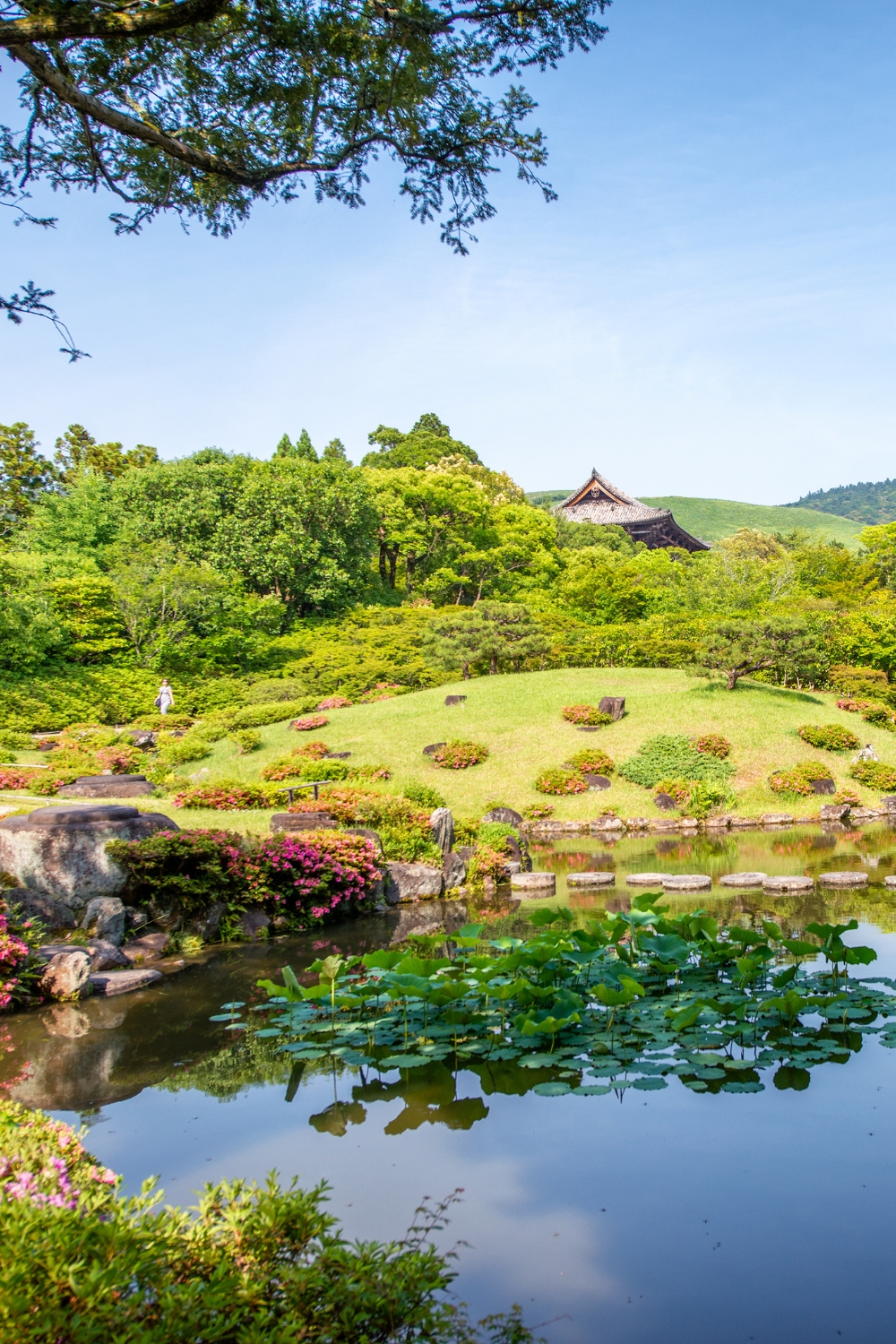
Yoshikien Garden offers three distinct garden styles within a single complex, showcasing different approaches to Japanese landscape design. This hidden gem provides peaceful retreat from temple visits while demonstrating the artistry of Japanese garden creation.
Three Garden Styles
The garden complex includes a pond garden featuring traditional strolling paths around a central pond, a moss garden creating serene green carpets under ancient trees, and a tea ceremony garden designed for the traditional tea ceremony with carefully placed stones and plants.
Each garden section represents different periods and philosophies of Japanese garden design, from the elaborate Heian period pond gardens to the austere tea ceremony aesthetics. The variety allows visitors to experience multiple garden traditions in one location.
Seasonal Beauty and Peaceful Atmosphere
The gardens showcase seasonal changes through carefully selected plants that provide year-round interest. Spring brings cherry blossoms and azaleas, summer offers lush green foliage, autumn displays brilliant maple colors, and winter creates stark beauty with bare branches and evergreens.
The gardens remain relatively undiscovered by tourists, providing peaceful moments for contemplation and photography. The entrance fee for international visitors is waived, making it an excellent value for cultural experiences.
Garden types: Pond, moss, and tea ceremony gardens Best seasons: Spring (cherry blossoms) and autumn (maple leaves) Atmosphere: Peaceful, uncrowded Special feature: Free admission for international visitors
9. Shin-Yakushi-ji Temple – Healing Buddha Temple

Shin-Yakushi-ji Temple houses one of Japan’s most important collections of Buddhist sculpture, featuring the healing Buddha Yakushi Nyorai surrounded by twelve divine generals. This intimate temple provides a more personal Buddhist experience away from the larger temple crowds.
The Healing Buddha and Twelve Generals
The temple’s main hall contains a magnificent statue of Yakushi Nyorai (Medicine Buddha) surrounded by twelve guardian generals, each displaying unique expressions and poses. These 8th-century sculptures represent masterpieces of early Japanese Buddhist art.
The Yakushi Buddha specializes in healing physical and spiritual ailments, making the temple popular with visitors seeking health and well-being. The twelve generals protect the Buddha and believers from different directions and threats.
Intimate Temple Experience
Unlike the massive temple complexes elsewhere in Nara, Shin-Yakushi-ji offers a more intimate setting for Buddhist contemplation. The smaller scale allows for closer observation of the artwork and more personal spiritual experiences.
The temple’s peaceful grounds include beautiful gardens and smaller buildings housing additional Buddhist statues and artwork. The less crowded atmosphere provides better opportunities for photography and quiet reflection.
Main attraction: Yakushi Nyorai and twelve divine generals Specialty: Healing and medicine Buddha Artistic period: 8th century sculptures Atmosphere: Intimate, peaceful, less crowded
10. Mount Wakakusa – Panoramic City Views
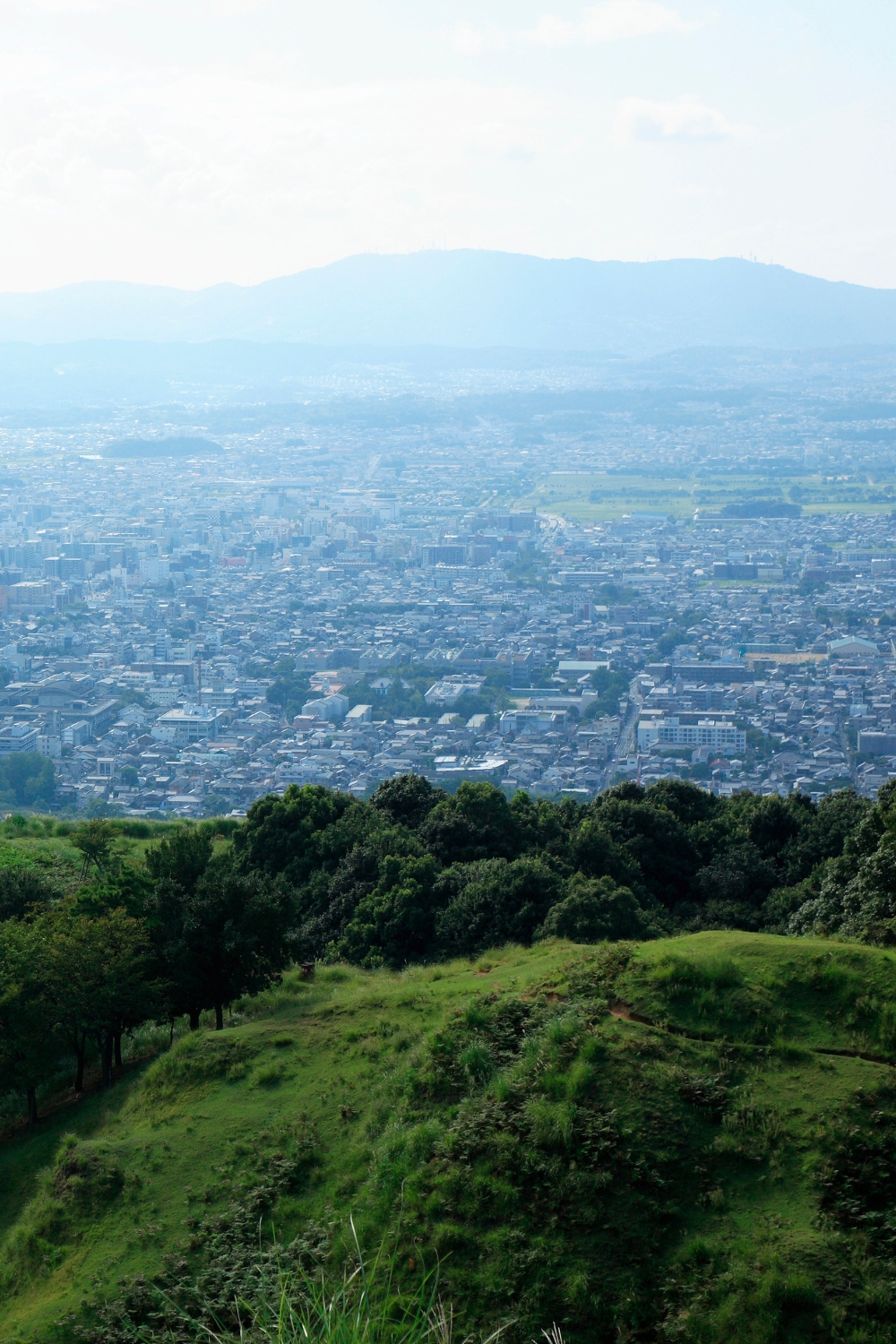
Mount Wakakusa offers the best panoramic views of Nara city and surrounding areas, accessible through hiking trails or seasonal grass burning festivals. This small mountain provides perfect opportunities for photography and outdoor activities.
Hiking and Scenic Views
The mountain features several hiking trails ranging from easy walks to more challenging climbs. The summit provides 360-degree views of Nara city, the temple complexes, and distant mountains. Clear days offer views extending to Osaka and Kyoto.
The mountain’s grassy slopes create unique landscapes different from Japan’s typically forested hills. The open grassland provides excellent picnic spots and photography opportunities, especially during sunrise and sunset.
Wakakusa Yamayaki Fire Festival
Every January, the entire mountain is set ablaze in the Wakakusa Yamayaki festival, creating spectacular nighttime views visible throughout the region. This 1,000-year-old tradition began as a boundary dispute resolution between temples and continues as a beloved winter celebration.
The festival includes fireworks displays before the mountain burning, creating one of Japan’s most dramatic winter events. The fire prevents forest encroachment and maintains the mountain’s distinctive grassland character.
Best views: Nara city, temples, distant mountains Hiking difficulty: Easy to moderate trails Annual festival: Wakakusa Yamayaki (January mountain burning) Best times: Sunrise, sunset, and during festivals
Planning Your Nara Visit
Transportation and Getting Around
Nara is easily accessible from Kyoto (45 minutes) and Osaka (30 minutes) by train. The city’s compact size makes most attractions walkable, though rental bicycles provide efficient transportation between distant sites.
Local buses connect outlying attractions like Horyu-ji Temple, while the main temple and park areas are within walking distance of each other. The Nara City Loop Bus provides convenient access to major attractions with day passes available.
Best Times to Visit
Spring (March-May): Cherry blossom season brings beautiful flowers but larger crowds. The weather is mild and perfect for outdoor activities.
Summer (June-August): Hot and humid weather, but fewer crowds at popular attractions. Early morning visits are most comfortable.
Autumn (September-November): Excellent weather and stunning fall foliage, especially at temples and gardens. This is peak season with higher prices and crowds.
Winter (December-February): Cool weather with occasional snow, fewer tourists, and special events like the Wakakusa Yamayaki fire festival.
Cultural Etiquette and Temple Visits
When visiting temples and shrines, dress modestly and behave respectfully. Remove hats and sunglasses when entering buildings, and don’t touch statues or artwork. Photography rules vary by location, so check for signs or ask permission.
The deer in Nara Park are generally friendly but can be pushy when they smell food. Keep bags closed and don’t tease them with food. Bow to the deer before offering crackers – many have learned to bow back!
Conclusion
Nara offers an incredible concentration of Japanese cultural treasures, natural beauty, and spiritual experiences within a compact, walkable city. From the massive Great Buddha of Todai-ji to the intimate gardens of Yoshikien, from over 1,000 sacred deer to ancient wooden buildings over 1,400 years old, each destination reveals different aspects of Japan’s rich heritage.
These ten must-visit places represent the best of what Nara offers, though the city rewards deeper exploration with hidden temples, quiet neighborhoods, and cultural experiences around every corner. The city’s manageable size allows visitors to experience multiple attractions in a single day while still having time for peaceful moments and cultural immersion.
Whether you visit Nara as a day trip from Kyoto or Osaka, or choose to stay longer to fully appreciate its offerings, the city provides an essential window into Japanese history, culture, and spirituality. The combination of accessible transportation, walkable attractions, and reasonable costs makes Nara perfect for travelers of all types and budgets.
Plan your Nara adventure to include both the major attractions and quieter moments of cultural discovery. This ancient capital city continues to enchant visitors with its unique blend of sacred deer, magnificent temples, and peaceful gardens that have inspired people for over 1,300 years.
